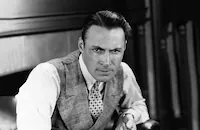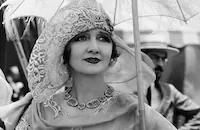Let Us Be Gay

Brief Synopsis
Cast & Crew
Robert Z. Leonard
Norma Shearer
Rod La Rocque
Marie Dressler
Gilbert Emery
Hedda Hopper
Film Details
Technical Specs

Synopsis
Kitty and Bob Brown part when he begins to take her for granted and engages in a flirtation with a vivacious blonde. Three years later, Mrs. Bouccicault, a wealthy and scheming socialite, finds that her granddaughter, Madge, is infatuated with Bob, though she is engaged to Bruce. The society matron calls on Kitty, whom she has met in Paris, to enlist her help in breaking up the infatuation. After mistaking many other men for her prey, Kitty discovers him to be none other than her divorced husband. Difficulties ensue, however, as Kitty becomes the focus of attention for all the male guests, and Mrs. Bouccicault spends most of her time chasing them away, finally sending for Kitty's children as a last resort. Consequently, Madge gives up her romance with Bob; and after some persuasion, he regains the affections of his former wife.

Director

Robert Z. Leonard
Cast

Norma Shearer

Rod La Rocque

Marie Dressler

Gilbert Emery

Hedda Hopper
Raymond Hackett

Sally Eilers
Tyrrell Davis
Wilfred Noy
William O'brien
Sybil Grove
Crew

Film Details
Technical Specs

Articles
Let Us Be Gay

Let Us Be Gay
Quotes
Trivia
Notes
Let Us Be Gay was also produced in a French-language version-see record for Soyons gais.
















